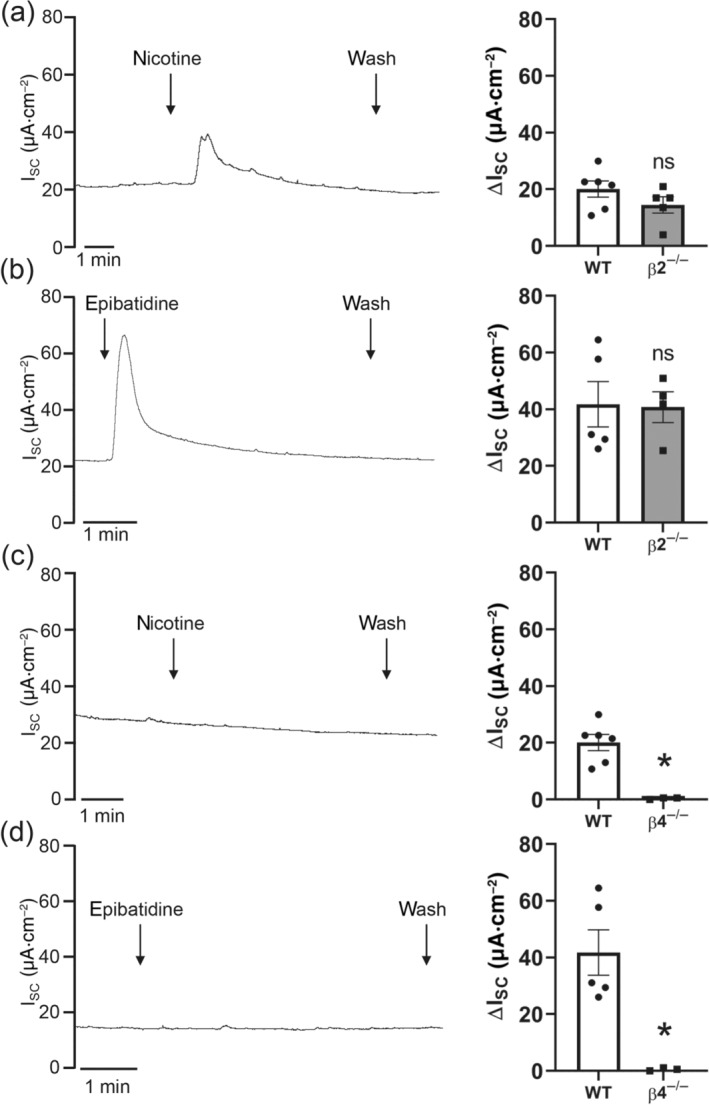FIGURE 3.

Effect of nicotine or epibatidine on transepithelial ion transport in β2‐ or β4‐deficient mice. (a) Apical application of nicotine (100 μmol·L−1) in β2−/− mice resulted in a transient reversible increase in the short circuit current (ISC). Representative current trace. (b) The nicotine‐induced peak (ΔISC) in β2−/− mice was similar to wild‐type (WT) mice (n = 5; ns, not significant). (c) Apical application of epibatidine (1 μmol·L−1) in β2−/− mice resulted in a transient reversible increase in ISC. Representative current trace. (d) The epibatidine‐induced peak (ΔISC) was similar in WT and β2−/− mice (n = 5; ns, not significant). (e) Apical application of nicotine (100 μmol·L−1) in β4−/− mice did not influence ISC. Representative current trace. (f) The nicotine‐induced peak (ΔISC) in β4−/− mice was significantly reduced compared to WT mice (n = 5, *P < 0.05). (g) Apical application of epibatidine (1 μmol·L−1) in β4−/− mice had no effect on ISC. Representative current trace. (h) The epibatidine‐induced peak (ΔISC) was significantly reduced in β4−/− mice compared to WT mice (n = 5, *P < 0.05)
